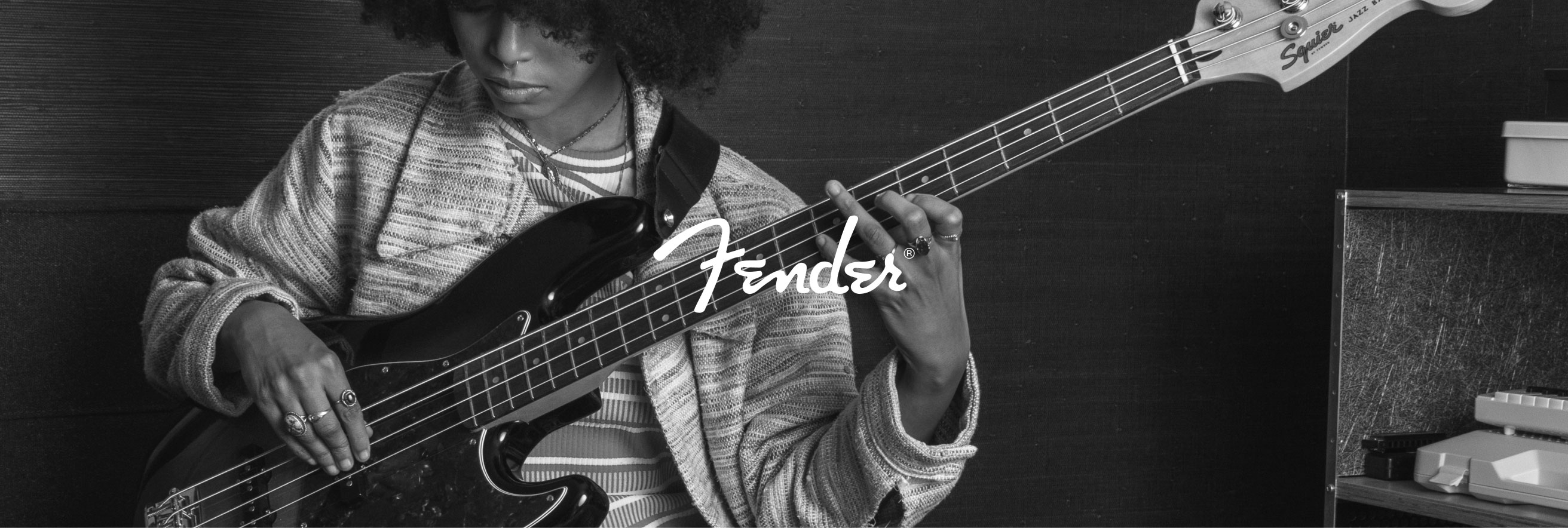
Sections
The notorious F Major chord. Just when you start to get a few chords under your fingertips, along comes this new one full of fret buzz, sore fingertips and strained wrists. Dread it, run from it, the F chord still arrives.
In this article we're going to take a look at why it's important to learn this infamous chord and three easy alternatives for playing it. Get these down and there's no need to break out in cold sweats the next time you see it in tablature or a chord chart.
Songs that Use the F Chord
Why should you learn the F Major chord? Because it's everywhere. Every genre in every decade, it doesn't matter. It's too important not to learn. Here's a short list of songs that use the F chord.
Rock Songs
The F chord is featured across rock history from classics like "Have You Ever Seen the Rain?" by Creedence Clearwater Revival, "Heart Full of Soul" by the Yardbirds, and "La Bamba" by Ritchie Valens, all the way to monster hits like "Another Brick in the Wall Pt.2" by Pink Floyd and "Sister Christian" by Night Ranger.
It also supports the infectious harmonies of several Beatles hits like From Me To You and Misery.
Country Songs
Check out country chart-toppers like "She's Everything" by Brad Paisley, "Snapback" by Old Dominion or "Tattoos & Scars" by Montgomery Gentry. Go further back to catch the F chord in standards like "Hey Good Lookin'" by Hank Williams or "A Thousand Miles From Nowhere" by Dwight Yoakam.
Pop Songs
Turn on the radio to hear it in R&B-infused pop like "Can't Feel My Face" by The Weeknd or "Like I'm Gonna Lose You" by Meghan Trainor. Need even more examples? Try "Say Something" by A Great Big World or even "With Or Without You" by U2.
How to Play the F Chord
To make this as painless as possible, let's start with some easy variations before moving to the full barre version that everyone knows.
Index finger on the 1st fret of the B (2nd) string
Middle finger on the 2nd fret of the G (3rd) string
Ring finger on the 3rd fret of the D (4th) string
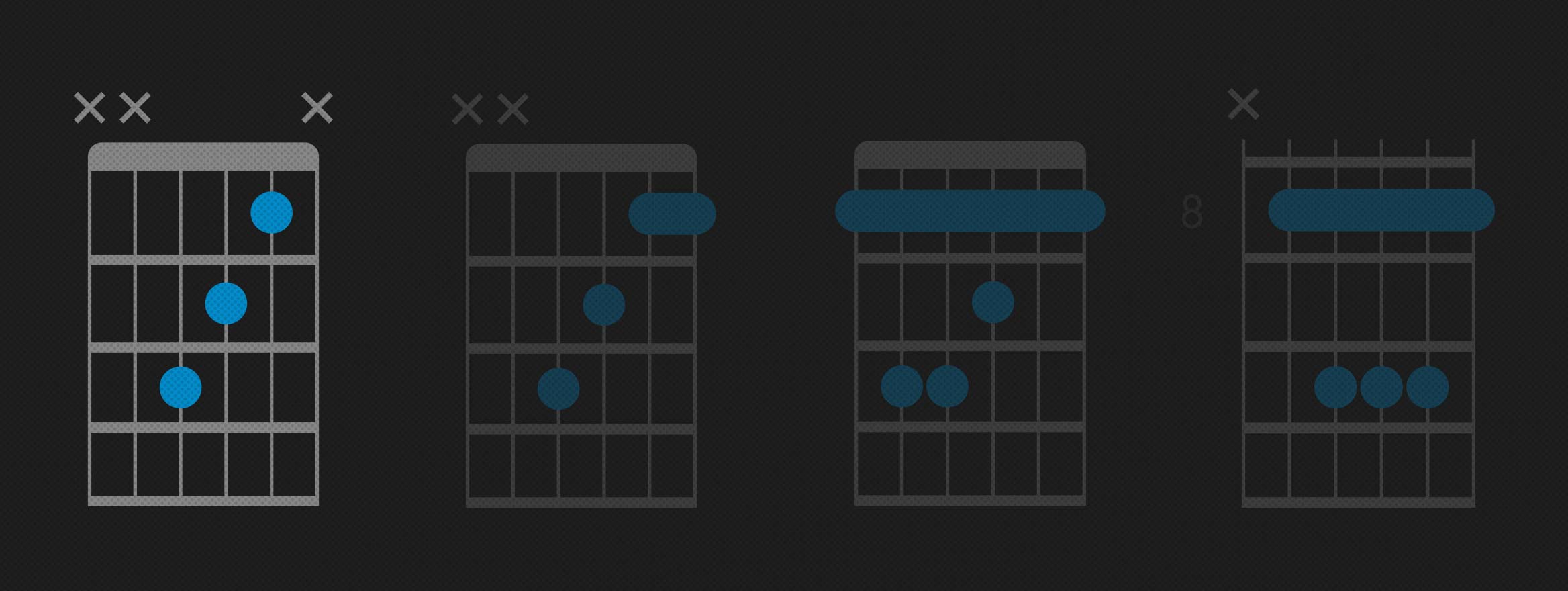
Strum three strings down from the D string.
This version works well because it sits right in the middle range of the guitar and doesn't require tricky fingering or too much strength. It's similar to a C Major chord shape but with less of a stretch.
Don’t miss out!
Be the first to know about new products, featured content, exclusive offers and giveaways.
Version 2
Once you feel comfortable with the three-note version, it's time to start filling out the sound.
Here's another version that includes the high E string:
Index finger on the 1st fret of the E (1st) string
Index finger on the 1st fret of the B (2nd) string
Middle finger on the 2nd fret of the G (3rd) string
Ring finger on the 3rd fret of the D (4th) string
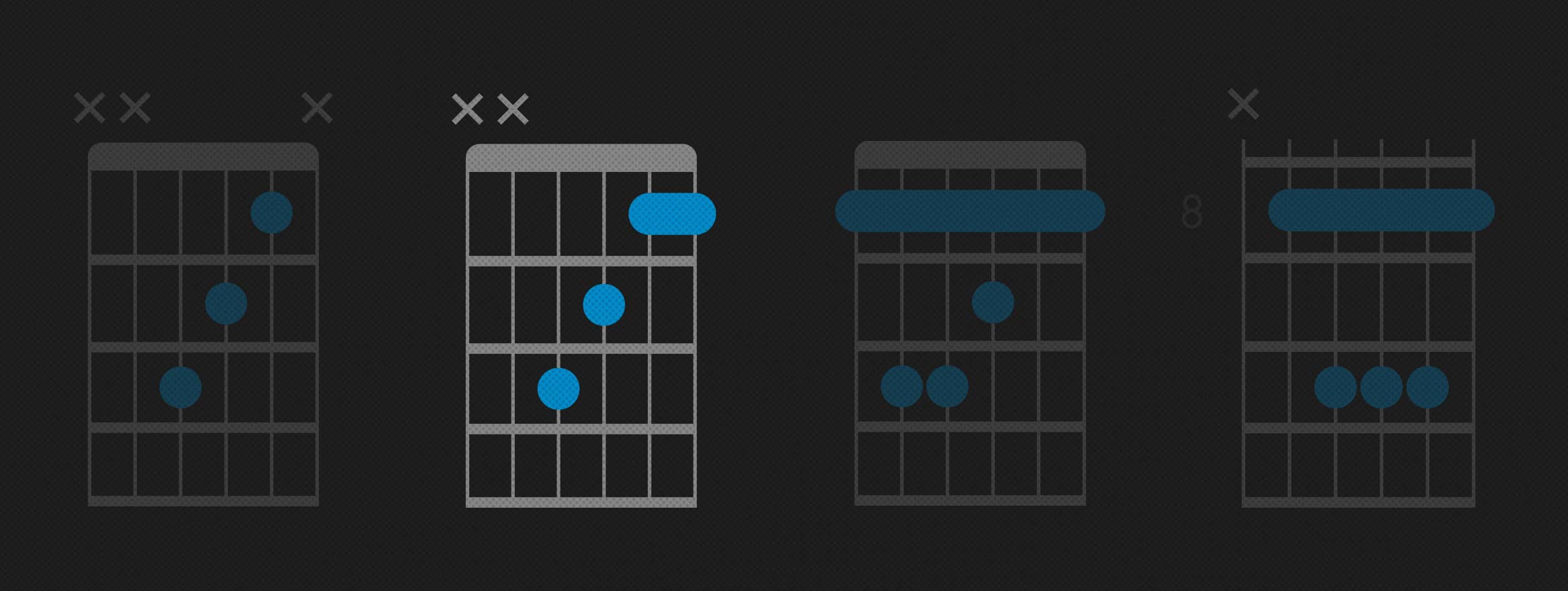
Strum four notes down from the D string. This version is almost identical to the first version but uses a mini barre across the first two strings with your index finger.
Version 3
It's time to earn your badge of honor with the full barre chord in the 1st position. Here's how to play the notorious version that gives beginners headaches:
Index finger on the 1st fret of the low E (6th) string
Index finger on the 1st fret of the B (2nd) string
Index finger on the 1st fret of the E (1st) string
Middle finger on the 2nd fret of the G (3rd) string
Ring finger on the 3rd fret of the A (5th) string
Pinky on the 3rd fret of the D (4th) string
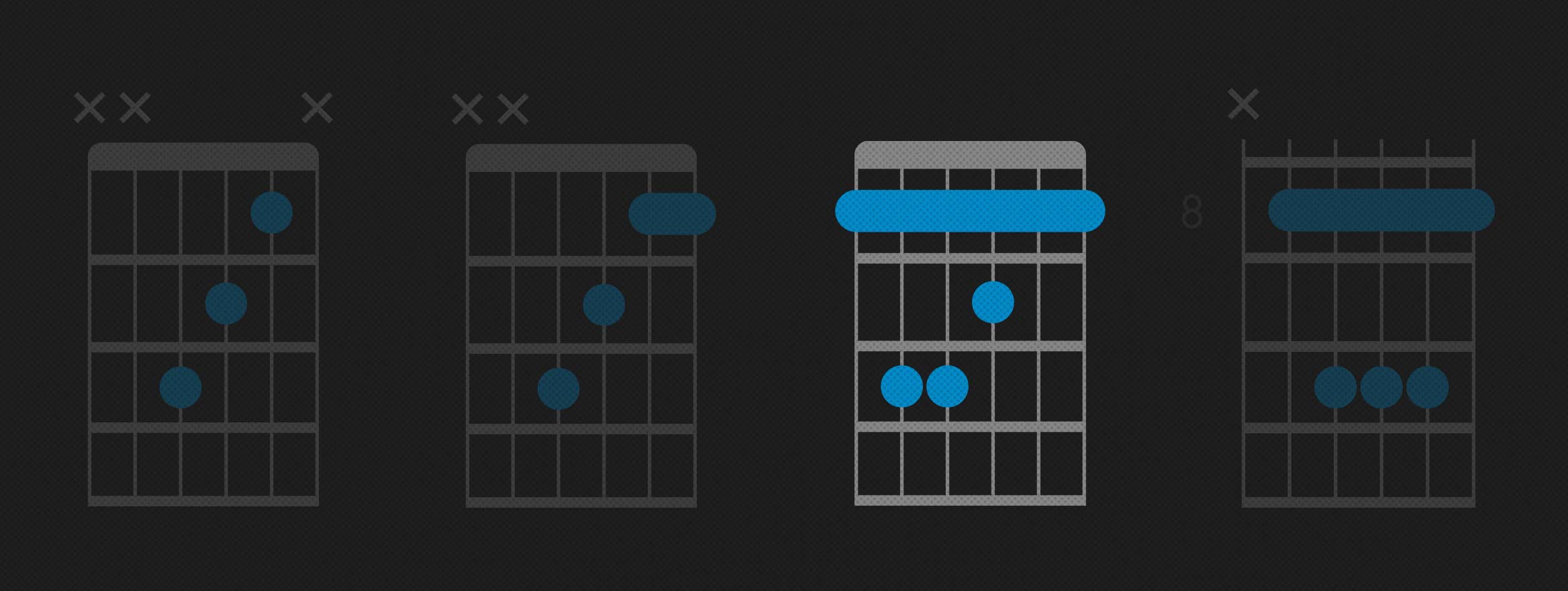
Strum all six strings down from the low E string.
What makes the form so difficult is you have to use your index finger across all six strings. Add the fact that it's so close to the headstock, which requires a lot of pressure to get a clean sound, and you'll understand why so many beginners complain about it.
Version 4
Let's wade into deeper waters with a barre chord version in another octave. Here's how to play it in the 8th position:
Index finger: 8th fret of the A (5th) string
Index finger: 8th fret of the E (1st) string
Middle finger: 10th fret of the D (4th) string
Ring finger: 10th fret of the G (3rd) string
Pinky finger: 10th fret of the B (2nd) string
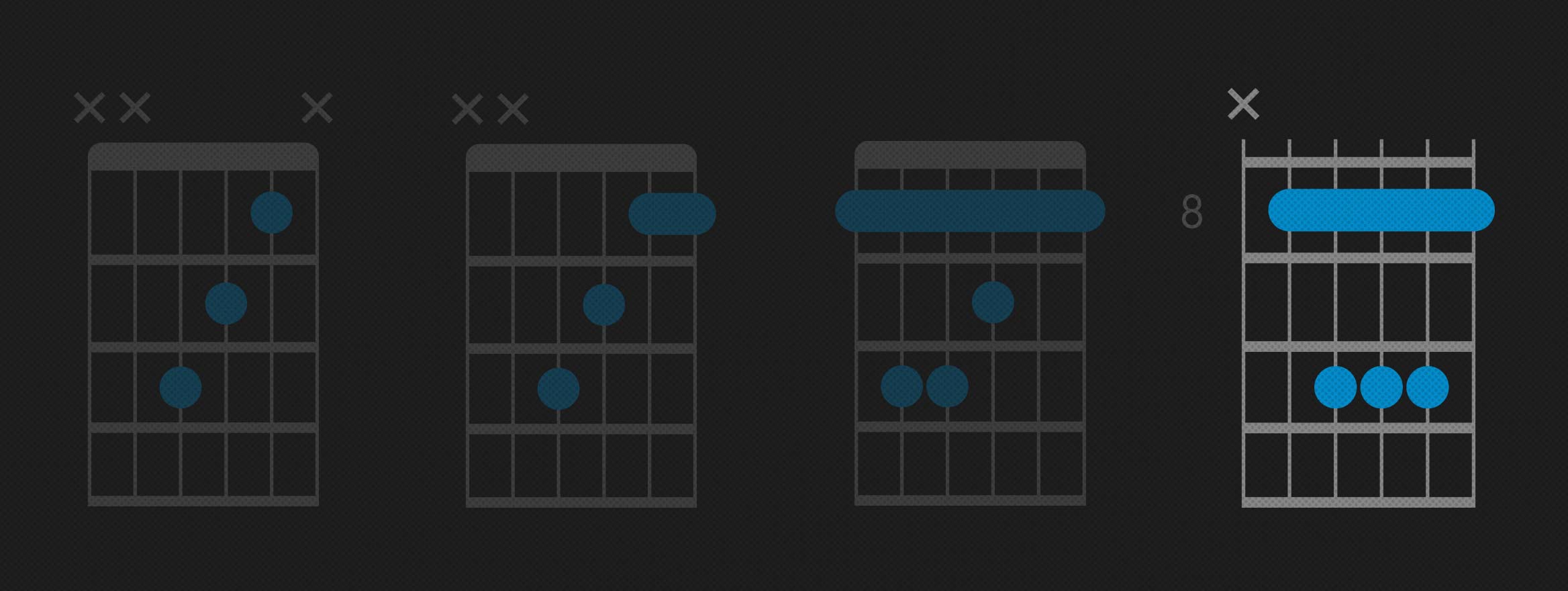
Strum five strings down from the A (5th) string.
Playing the F Chord - Tips and Practice Suggestions
If possible, start playing the full barre version on an electric guitar instead of an acoustic. The lighter string tension will be easier on your wrists so you can focus on finger placement and coordination without worrying as much about eliminating fret buzz. Take it slow an easy. Rome wasn't built in a day, so don't expect to rock this chord straight out of the gates. If you experience wrist pain, stop!
After you get comfortable playing the F chord by itself, work on some changes. Based on music theory and common chord progressions, you'll often see the F major chord played next to the C major chord, G major chord and Bb major chord. Start practice moving from an F to a C or G chord and back again. Once you've worked up enough finger and wrist strength, increase the difficulty by going between an F and Bb chord (another barre chord).
The F chord has a reputation for being tough, and rightfully so. It takes strength and coordination, but there's no need to jump into the deep end right away. Ease into it, like an old man into a nice warm bath. Start with the simpler versions and work your way up. It doesn't have to be as notorious or difficult as everyone says.
If you'd like to learn how to play even more chords, browse Fender Play's chord library, learn about chord types, and find tips on how to master them.
If you're not a member yet, sign up for a free Fender Play trial!


